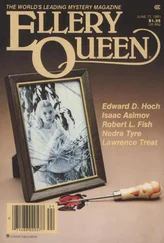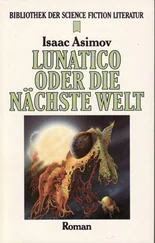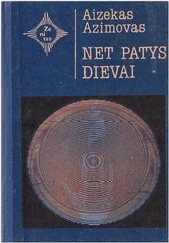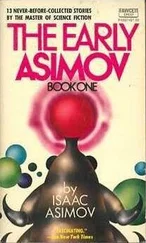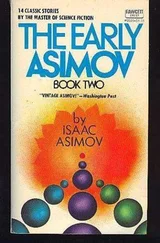Isaac Asimov - Asimov’s Guide To Shakespear. Volume 1
Здесь есть возможность читать онлайн «Isaac Asimov - Asimov’s Guide To Shakespear. Volume 1» весь текст электронной книги совершенно бесплатно (целиком полную версию без сокращений). В некоторых случаях можно слушать аудио, скачать через торрент в формате fb2 и присутствует краткое содержание. Жанр: Культурология, на английском языке. Описание произведения, (предисловие) а так же отзывы посетителей доступны на портале библиотеки ЛибКат.
- Название:Asimov’s Guide To Shakespear. Volume 1
- Автор:
- Жанр:
- Год:неизвестен
- ISBN:нет данных
- Рейтинг книги:4 / 5. Голосов: 1
-
Избранное:Добавить в избранное
- Отзывы:
-
Ваша оценка:
- 80
- 1
- 2
- 3
- 4
- 5
Asimov’s Guide To Shakespear. Volume 1: краткое содержание, описание и аннотация
Предлагаем к чтению аннотацию, описание, краткое содержание или предисловие (зависит от того, что написал сам автор книги «Asimov’s Guide To Shakespear. Volume 1»). Если вы не нашли необходимую информацию о книге — напишите в комментариях, мы постараемся отыскать её.
Asimov’s Guide To Shakespear. Volume 1 — читать онлайн бесплатно полную книгу (весь текст) целиком
Ниже представлен текст книги, разбитый по страницам. Система сохранения места последней прочитанной страницы, позволяет с удобством читать онлайн бесплатно книгу «Asimov’s Guide To Shakespear. Volume 1», без необходимости каждый раз заново искать на чём Вы остановились. Поставьте закладку, и сможете в любой момент перейти на страницу, на которой закончили чтение.
Интервал:
Закладка:
—lines 1-4
Adonis is the Greek version of a Semitic vegetation god. From the beginnings of agriculture, there must have been a kind of relief each year among the farmers that, after the death of vegetation in the fall, there was a rebirth in the spring. Rituals personifying this death-and-rebirth were invented and they must have been looked upon as a kind of flattering homage to Nature (or even as a hint to a possibly forgetful Nature), inducing her to continue. The feeling would surely arise at last that only a thorough-going carrying through of the ritual each year would bring about a fertile growing season and a good harvest, and upon that, life through the barren winter would depend.
In that sense, the type of myth of which the tale of Venus and Adonis is representative (though prettied-up from its straightforward origins by the sophisticated imaginations of the later classical poets), reflects the historic birth of agriculture. It can be tied to the great event, some seven thousand years before the Trojan War, that saw the first deliberate cultivation and harvest of wild grain in the foothills of the Zagros Mountains in what is now western Iran.
The Sumerians, about 2000 b.c., represented the agricultural cycle with a god, Dumu-zi, who died and was resurrected; a death-and-resurrection which was celebrated each year by the people of the land. The myth and the ritual were adopted by the later Babylonians and Assyrians-the Semitic peoples who succeeded the Sumerians in the land of the Tigris and Euphrates. In the Semitic language of Babylonia, the name of the vegetation god became Tammuz.
In the Tammuz myth, the god descends into the underworld after his death and all vegetation dies with him. A wailing goddess (variously described as his sister, mother, or wife) manages to rescue him. In the most familiar form of the myth, the rescuer is Ishtar, his wife or love.
The passionate rites for Tammuz were exceedingly attractive to women in particular. They found emotional relief in the wailing and utter grief that symbolized Tammuz' death and in the almost orgiastic joy that came when the priests raised the cry that he was reborn.
The stern prophets of Israel had a hard job keeping the Israelite women from joining in this pagan rite. The tale of Jephthah's daughter was possibly an attempt to solve the problem by converting the rite into a patriotic commemoration. The Israelite general Jephthah had beaten the enemy, after making a rash vow to sacrifice the first living thing that came to greet him on his return. It turned out to be his daughter, whom he sacrificed. The Bible goes on to explain: "And it was a custom in Israel, That the daughters of Israel went yearly to lament the daughter of Jephthah the Gileadite four days in a year" (Judges 11:39-40).
If so, this pious wile did not work. Ezekiel, at the time of the Judean exile in Babylon, enumerated the sins of the Jews of the time and said that in the very Temple in Jerusalem "there sat women weeping for Tammuz" (Ezekiel 8:14).
And in one way, Tammuz has remained in Jewish consciousness ever since. The Babylonians named a month in honor of the god and the exiled Jews, in adopting the Babylonian calendar, adopted the month too. Even today, one of the months of the Jewish calendar (falling in the latter half of June and the earlier half of July) is called Tammuz.
The rites of a dead-and-resurrected God occur in the Greek myths too.
There is the case of Demeter (the grain goddess), whose daughter, Persephone, is abducted by Hades, the god of the underworld. While Persephone is gone, all grain withers, but finally Demeter manages to rescue her daughter under conditions that allow herself and Hades to share her, each for part of the year. The Eleusinian Mysteries, secret religious rites among the Greeks, seem to have involved the celebration of this death-and-resurrection, expanding it to include the resurrection of the human soul after the death of the human body.
As the Greeks and the Semites of the East gained more and more in the way of cultural interchange, the Tammuz version entered Greek mythology directly. Tammuz became Adonis.
The name shift is no mystery. Names of gods are always a little difficult to handle in any culture that considers the name of an object to be almost the equivalent of the object itself. To touch the name with one's own tongue and breath is a form of blasphemy and so circumlocutions are used. Instead of saying Tammuz, one says Lord (just as, in the Bible, Lord is used in place of Yahveh).
The Semitic term for "Lord" is "Adonai" and it was "Adonai," rather than "Tammuz," that was adopted by the Greeks. They added the final s, which is an almost invariable ending on Greek proper names, making it "Adonis."
Since Ishtar was the lover of Tammuz in the Babylonian myth, the equivalent of Ishtar would have to be the lover of Adonis in the Greek myth. The Greek equivalent of Ishtar was Aphrodite, the goddess of love and beauty.
The Greek myth had Adonis born the son of King Theias of Assyria. No such king existed in actual history, to be sure, but this is a hint of the Babylonian origin of the myth. We might suppose, therefore, that the scene of the poem is Babylonia, though Shakespeare never indicates any particular place-and perhaps gave the matter no thought at all.
Adonis' mother was Myrrha, who was herself the daughter of Theias. Myrrha had conceived an incestuous passion for her father and managed to sneak into his bed, with the result that she became pregnant by him. When the shocked father discovered the truth, he would have killed her, but the pitying gods changed her into the myrrh tree.
The myrrh tree yields a bitter resinous sap (myrrh), which oozes out when the bark is split. (The word "myrrh" is from an Arabic word meaning "bitter.") The sap is valued for its uses as incense and in cosmetics and embalming. (It was one of the three gifts brought to the infant Jesus by the wise men-"they presented unto him gifts; gold, and frankincense, and myrrh," Matthew 2:11.)
The sap on being exposed to air hardens into resinous drops called "tears," and these are supposed to represent the tears of Myrrha over the terrible thing she had done. (Working backward, we can suppose that this part of the myth arose over the attempt to explain why a tree should seem to weep.)
In the Greek myth, the myrrh tree into which Myrrha had been changed split after nine months, and the infant Adonis emerged. Aphrodite (who had inspired Myrrha's fatal love in the first place) felt remorse at the event and rescued Adonis. She placed him in a box and gave him to Persephone, goddess of the underworld, for temporary safekeeping. Persephone, noting the beauty of the child, refused to give him back and there was a quarrel that ended with each having him part of the time.
Here again is the tale of whiter (Adonis with Persephone) and summer (Adonis with Aphrodite), enlivened, in the Greek way, by a story of forbidden love.
This, at least, is the myth as told by Apollodorus, an Athenian poet who lived in the second century b.c. Shakespeare does not follow this. He begins with Adonis as a grown man, says nothing of his origins, and concerns himself only with the final stage of the myth, following a version given by Ovid.
Ovid, who seems to have been Shakespeare's favorite classical author, is the Roman poet whose name in full was Publius Ovidius Naso. About a.d. 1 he was writing his most famous work-a version, in Latin verse, of those Greek myths that involved the transformation ("metamorphosis") of one living thing into another.
Ovid's book is therefore called Metamorphoses, and the myth of Adonis is included, since his mother had been turned into a myrrh tree.
Sick-tkoughted Venus…
In the final couplet of the first stanza, Shakespeare introduces the other member of the mythical duo:
Читать дальшеИнтервал:
Закладка:
Похожие книги на «Asimov’s Guide To Shakespear. Volume 1»
Представляем Вашему вниманию похожие книги на «Asimov’s Guide To Shakespear. Volume 1» списком для выбора. Мы отобрали схожую по названию и смыслу литературу в надежде предоставить читателям больше вариантов отыскать новые, интересные, ещё непрочитанные произведения.
Обсуждение, отзывы о книге «Asimov’s Guide To Shakespear. Volume 1» и просто собственные мнения читателей. Оставьте ваши комментарии, напишите, что Вы думаете о произведении, его смысле или главных героях. Укажите что конкретно понравилось, а что нет, и почему Вы так считаете.

